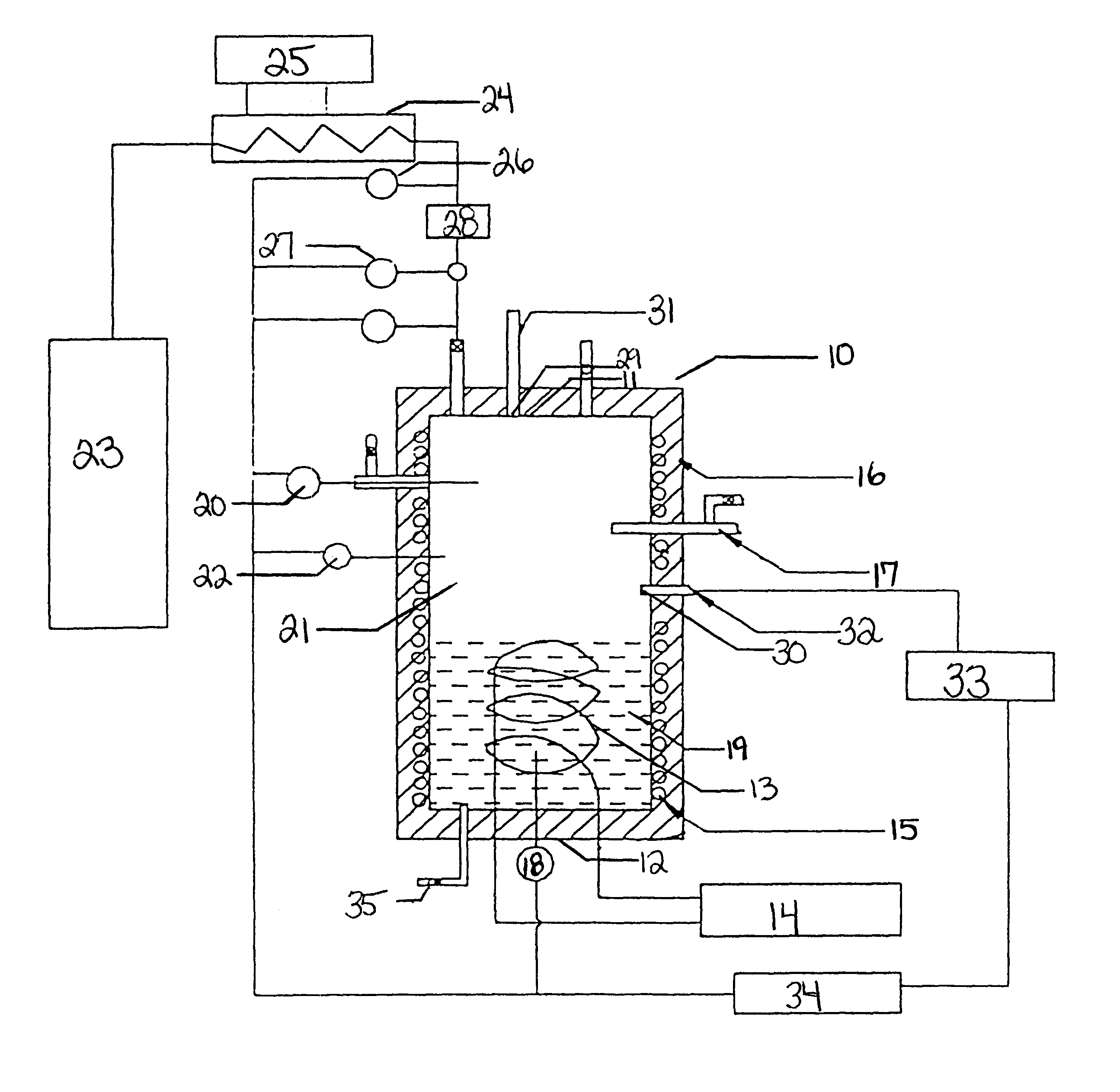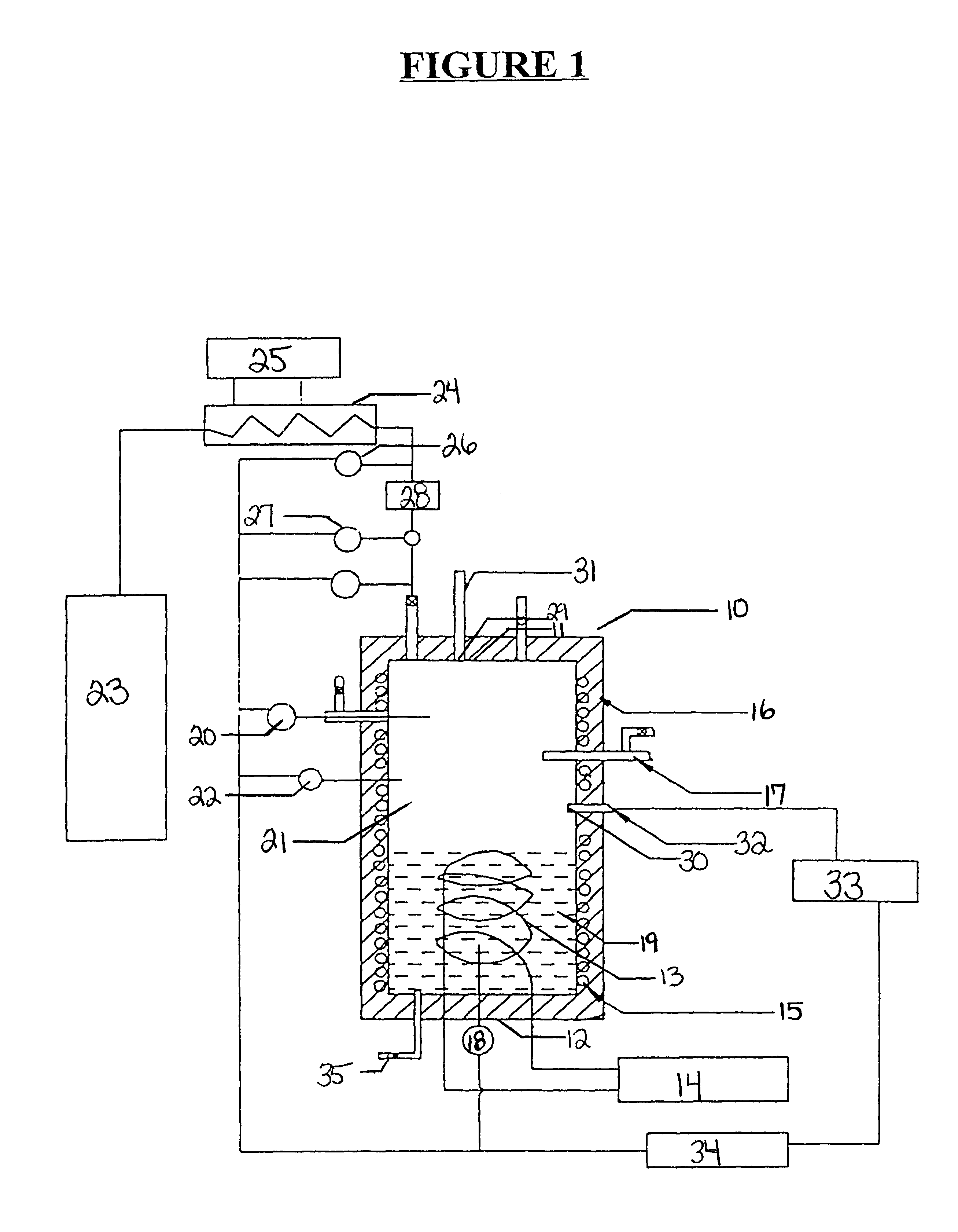Surfactant process for promoting gas hydrate formation and application of the same
a technology of surfactant and gas hydrate, which is applied in the direction of fixed capacity gas holders, mechanical equipment, gas/liquid distribution and storage, etc., can solve the problems of gas tank bursting, high cost and danger, and undesirable deficiencies of each of these storage methods
- Summary
- Abstract
- Description
- Claims
- Application Information
AI Technical Summary
Benefits of technology
Problems solved by technology
Method used
Image
Examples
example 1
Hydrate Growth
A quiescent water-surfactant-gas system is made by first combining about 2500 ml double distilled water and about 286 ppm sodium dodecyl sulfate to form a water-surfactant solution. The water-surfactant solution is pumped into the empty test cell to displace any gases therein. Ethane is then injected into the cell under pressure to displace the water-surfactant solution to a predetermined water level. The pressure of the test cell is about 2.31 MPa (335 psi). The temperature is adjusted to about 282 K (48.degree. F.). The inside of the cell is observed on a television monitor. Gas hydrates develop rapidly outwardly from the walls toward the center of the cell in the shape of a concentric cylinder.
FIG. 4 is a photograph of the crystal structure taken only six and a half minutes after the hydrate particles begin to form. As can be seen, the hydrate particles rapidly develop from the cell walls toward the center of the cell to form solid hydrate particle mass in the shape...
example 2
Rate of Hydrate Formation
A quiescent water-surfactant-gas system is made by first combining about 2500 ml double distilled water and about 286 ppm sodium dodecyl sulfate to form a water-surfactant solution. The water-surfactant solution is pumped into the empty test cell to displace any gases therein. Ethane is then injected into the cell under pressure to displace the water-surfactant solution to a predetermined water level. Hydrates form quickly, and about 0.3 moles ethane / liter solution is occluded in about 20 minutes after the induction period. The occluded gas content approaches equilibrium in about 3 hours. Thus, a formation-decomposition cycle, including turnaround time, can be achieved within a 24-hour period.
The results of Comparative Example 2 indicate that hydrates form very slowly in a quiescent system of pure water and gas. The results of Example 2 indicates that, under like conditions, the addition of surfactant to the water increases the rate of hydrate formation in a...
example 3
Conversion of Interstitial Water
A quiescent water-surfactant-gas system is made by first combining about 2500 ml double distilled water and about 286 ppm sodium dodecyl sulfate to form a water-surfactant solution. The water-surfactant solution is pumped into the empty test cell to displace any gases therein. Ethane is then injected into the cell under pressure to displace the water-surfactant to a predetermined water level. The initial pressure is about 2.61 MPa (379 psi). Hydrate particles form with attendant free water trapped between particles. The ethane gas E-15 above the stagnant water is allowed to approach equilibrium at about 0.78 MPa (113 psi) and about 276.5 K (38.degree. F.), at which time the reaction is stopped and the unreacted free water is drained from the bottom of the cell using drain 35 depicted in FIG. 1. The cell is repressurized to about 2.61 MPa (379 psi) by adding another batch of ethane to the cell. The pressure is allowed to decline as more hydrates form. ...
PUM
 Login to View More
Login to View More Abstract
Description
Claims
Application Information
 Login to View More
Login to View More - R&D
- Intellectual Property
- Life Sciences
- Materials
- Tech Scout
- Unparalleled Data Quality
- Higher Quality Content
- 60% Fewer Hallucinations
Browse by: Latest US Patents, China's latest patents, Technical Efficacy Thesaurus, Application Domain, Technology Topic, Popular Technical Reports.
© 2025 PatSnap. All rights reserved.Legal|Privacy policy|Modern Slavery Act Transparency Statement|Sitemap|About US| Contact US: help@patsnap.com



